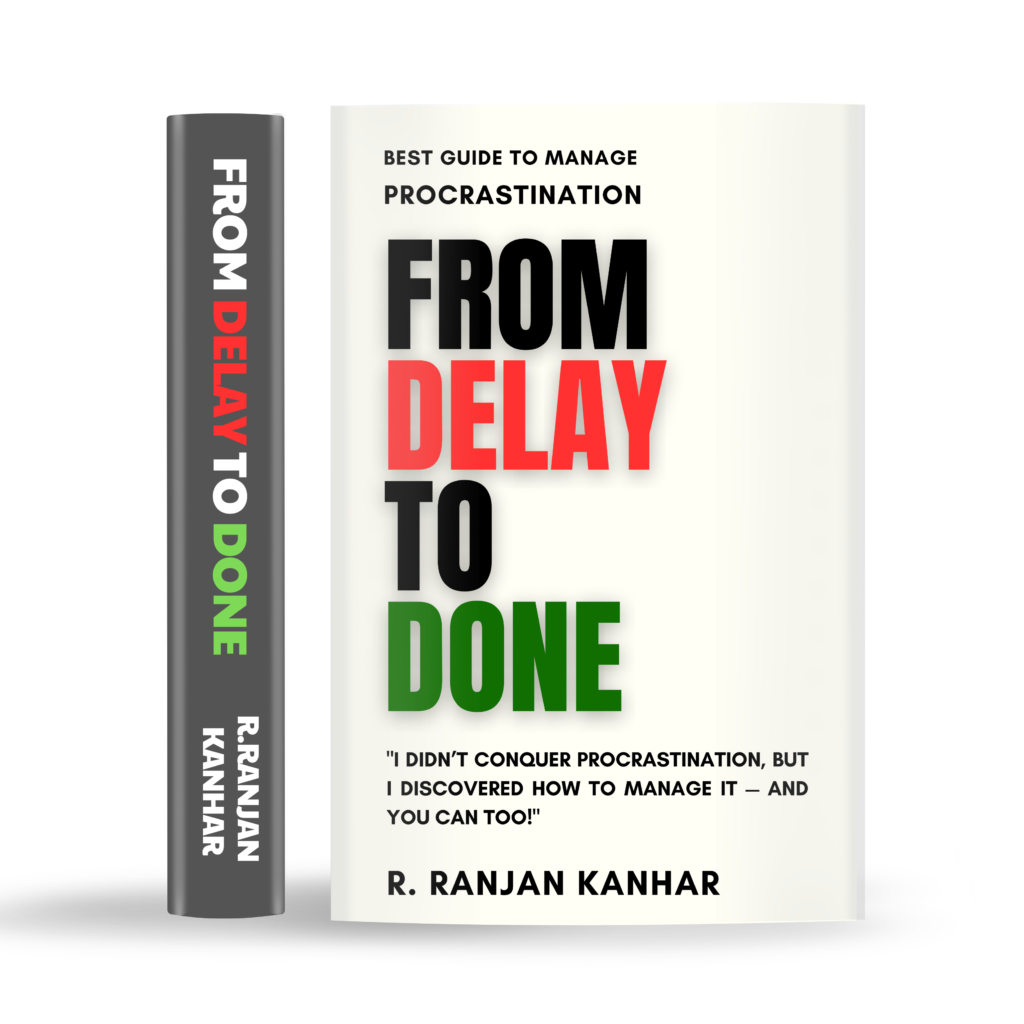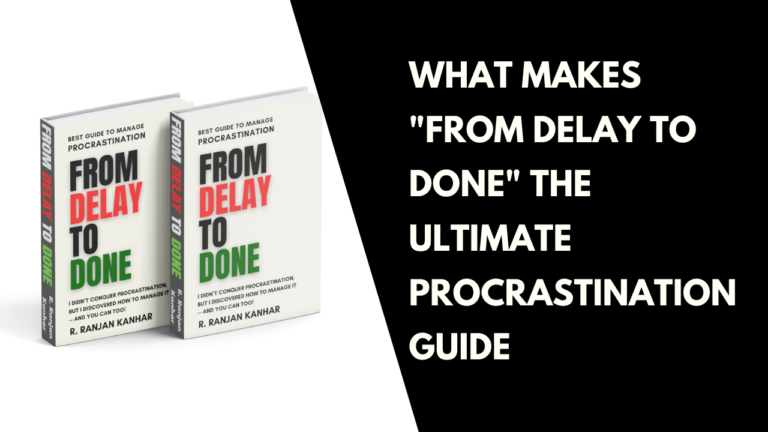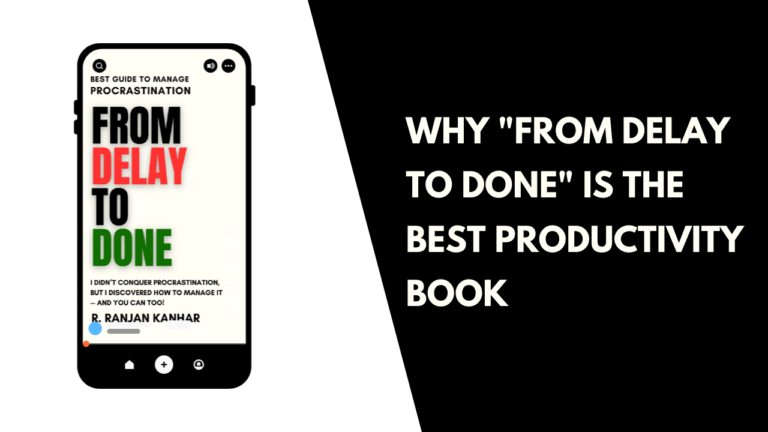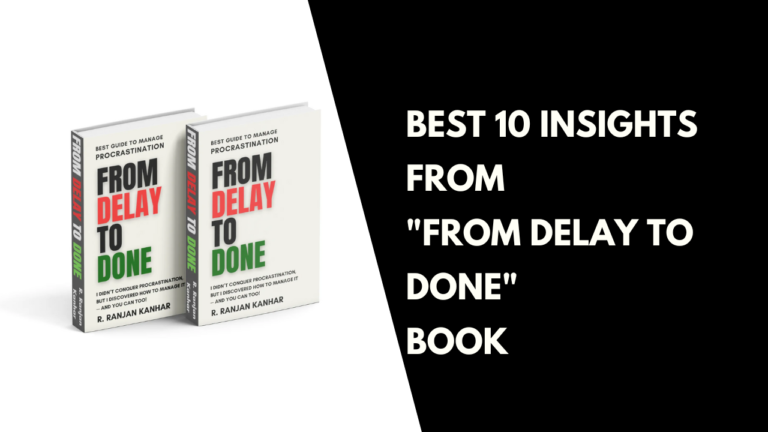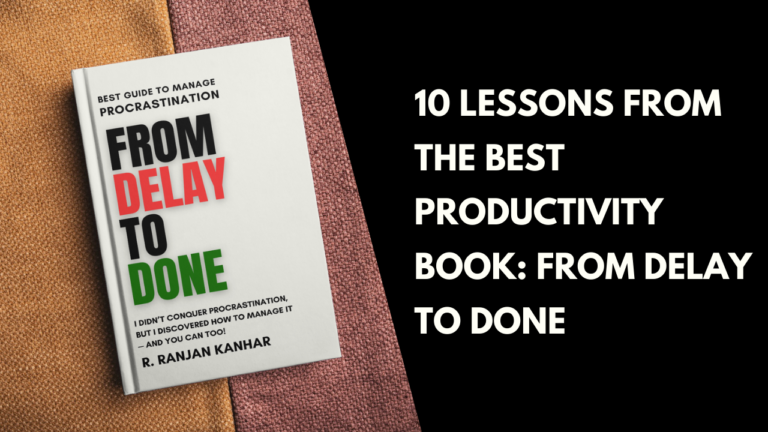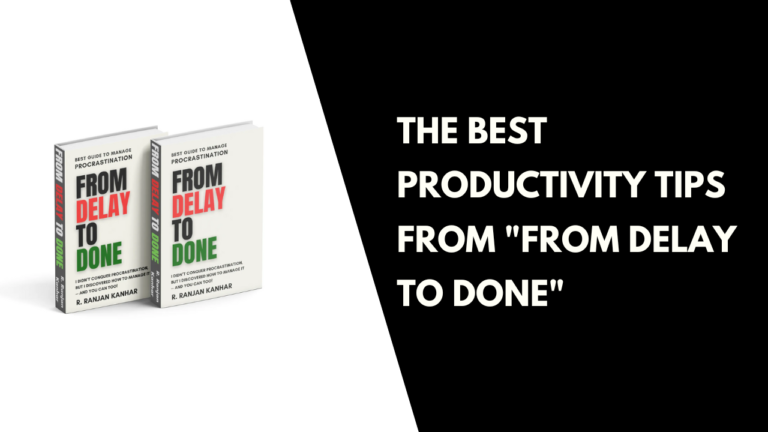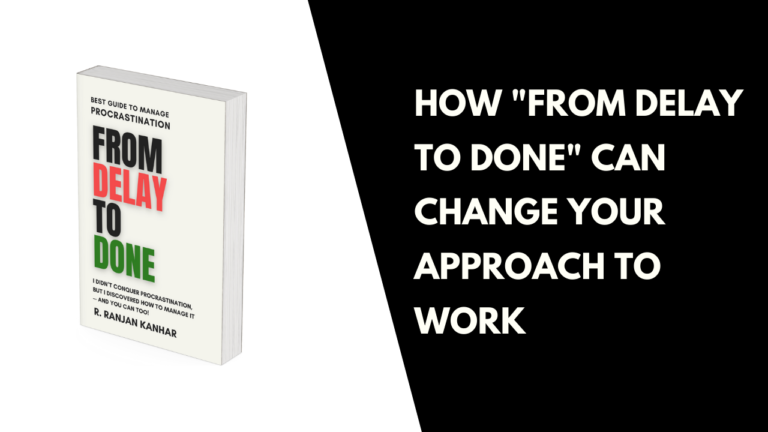Chapter Highlights from “From Delay to Done” You Can Use Today
Introduction – Highlights from “From Delay to Done” You Can Use Today
Procrastination isn’t just a bad habit—it’s a barrier that keeps us from reaching our full potential. In my book From Delay to Done, I delve into practical ways to stop procrastination and manage it effectively. But today, I want to offer you a sneak peek into the key highlights from the book, with actionable advice you can start using right now. Whether you’re a student, office employee, or entrepreneur, these strategies will help you take charge of your time and productivity.
Table of Contents
ToggleSo, let’s dive into some golden nuggets from From Delay to Done that you can implement today to stop procrastination and manage your daily tasks better.
Chapter 1: Understanding the Root of Procrastination
Many people think procrastination is just laziness, but it’s far more complex. Procrastination often stems from fear—fear of failure, fear of imperfection, or even fear of success. In this chapter, I explain how understanding your triggers is the first step toward overcoming them.
Example:
Imagine you’re a college student with an important essay due in two weeks. Instead of starting it, you binge-watch Netflix and convince yourself you’ll do it tomorrow. Why? Maybe the thought of writing the essay feels overwhelming, or you’re unsure of how to start.
Actionable Tip:
Break the task into smaller, manageable chunks. For instance, spend 15 minutes brainstorming ideas today. Tomorrow, draft an outline. This strategy, called “micro-tasking,” reduces overwhelm and helps you stop procrastination.
Chapter 2: The Power of Prioritization
One reason we procrastinate is that we don’t know where to start. This chapter focuses on the importance of prioritization using tools like the Eisenhower Matrix.
Example:
As an office employee, you have emails to respond to, a report to finish, and a team meeting to prepare for. Everything feels urgent, so you end up doing none of it.
Actionable Tip:
Sort your tasks into four categories:
- Urgent and Important
- Not Urgent but Important
- Urgent but Not Important
- Not Urgent and Not Important
Start with tasks in category 1. By focusing on what truly matters, you can manage procrastination and achieve more in less time.
Chapter 3: Building Momentum with the Two-Minute Rule
Getting started is often the hardest part. In this chapter, I discuss the “Two-Minute Rule,” a simple but effective strategy to overcome inertia.
Example:
You’ve been avoiding a daunting task—cleaning your cluttered workspace. Instead of waiting for a “perfect time,” commit to just two minutes of effort. Once you start, you’ll likely continue longer.
Actionable Tip:
Apply this rule to any task you’ve been putting off. Whether it’s replying to an email, doing the dishes, or exercising, starting small can help you stop procrastination and build momentum.
Chapter 4: Managing Time with the Pomodoro Technique
Time management is a cornerstone of overcoming procrastination. The Pomodoro Technique, a method I explore in detail in From Delay to Done, helps you stay focused and productive.
Example:
Entrepreneurs often juggle multiple projects and struggle to find time for deep work. By using a timer to work in 25-minute intervals followed by a 5-minute break, you can maintain focus and prevent burnout.
Actionable Tip:
Set a timer for 25 minutes and work on a single task without distractions. Take a short break afterward, then repeat. This technique not only boosts productivity but also makes work feel less daunting.
Chapter 5: The Role of Accountability
Accountability can be a game-changer when trying to manage procrastination. In this chapter, I highlight how sharing your goals with someone else can keep you on track.
Example:
A friend of mine, struggling to complete her online course, joined a study group where members held each other accountable. The group’s regular check-ins motivated her to stay consistent and finish the course.
Actionable Tip:
Find an accountability partner—someone who will encourage you to stick to your goals. Whether it’s a friend, colleague, or mentor, regular check-ins can help you stop procrastination and stay on track.
Chapter 6: Overcoming Perfectionism
Perfectionism is a common cause of procrastination. This chapter emphasizes that done is better than perfect.
Example:
I once delayed publishing a blog post because I felt it wasn’t “perfect.” Months later, I realized that I had wasted valuable time chasing an unrealistic standard.
Actionable Tip:
Set realistic expectations for yourself. Remember, progress is more important than perfection. Focus on completing tasks rather than perfecting them.
Chapter 7: Rewarding Yourself
Motivation thrives on rewards. This chapter discusses how celebrating small wins can keep you motivated and help you manage procrastination.
Example:
After completing a challenging project, treat yourself to something you enjoy—a favorite meal, a relaxing walk, or an episode of your favorite show.
Actionable Tip:
Create a reward system for your tasks. Knowing there’s a treat waiting for you can make even the most mundane tasks feel worthwhile.
Chapter 8: Using Technology Wisely
Technology can be a double-edged sword. While it can help you stay organized, it can also be a major distraction. This chapter covers tools and apps that can help you stop procrastination and manage your tasks effectively.
Example:
Apps like Todoist and Trello can help you track your tasks and deadlines. On the other hand, apps like Forest can minimize distractions by encouraging you to stay off your phone.
Actionable Tip:
Use productivity apps to plan your day, but also set boundaries for screen time. Turn off unnecessary notifications and focus on what truly matters.
Conclusion: Take the First Step Today
From Delay to Done isn’t just a book—it’s a guide to transforming your life by breaking free from procrastination. By understanding your triggers, prioritizing tasks, and using techniques like the Pomodoro method, you can stop procrastination and manage your time more effectively.
Remember, change doesn’t happen overnight. Start small, stay consistent, and celebrate your progress. The journey to a more productive life begins with a single step—and that step could be putting these chapter highlights into action today.
So, what are you waiting for? Take charge of your time and start your journey from delay to done!
Call to Action:
Loved these tips? Dive deeper into strategies and success stories in my book, From Delay to Done. Order your copy today and take the first step toward a more productive life!
“Stop postponing your dreams! From Delay to Done is your ultimate guide to conquering procrastination. Grab your copy today on Amazon!

